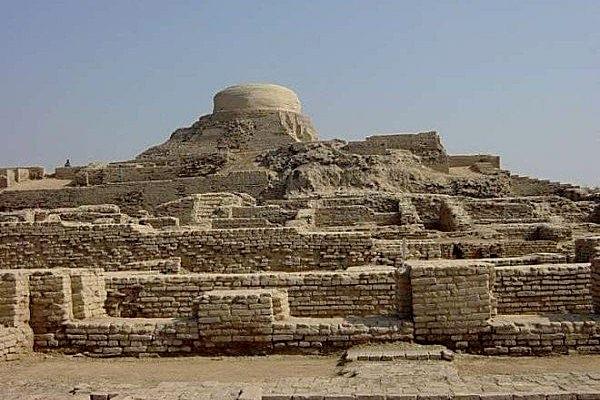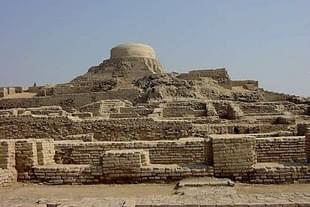Politics
Bones Of Contention: Who Do The Rakhigarhi Skeletons Really Belong To?
Anil Kumar Suri
Sep 02, 2018, 01:40 PM | Updated 01:40 PM IST
Save & read from anywhere!
Bookmark stories for easy access on any device or the Swarajya app.


Ahead of the imminent publication of the results of the analysis of ancient DNA extracted from skeletons found at the Indus Valley site of Rakhigarhi, a recent article in India Today appears to have fired the first propaganda shots. What I couldn’t help noticing was how quickly the loaded comments began – indeed, the title itself mentions “Hindutva nationalists” – before the facts were even laid out.
Here are a few things the columnists at India Today don’t want you to know – or, perhaps, are unaware of themselves.
Unlike commonly supposed, the Indus Valley area was multi-ethnic and multi-linguistic – much like one would expect Delhi or Chandigarh to be. Many groups of people, speaking different languages, and with diverse cultural practices were living there. Crucially, the skeletons in the cemeteries are believed to account for only a small fraction of the population of the cities. Obviously, a large number of Harappans were disposing of their dead by cremation or exposure (as the Zoroastrians do). Thus, there were populations living in the Indus cities whose remains we may never find.
While the local conditions in Rakhigarhi may have been different from those in Harappa, it would nevertheless be safe to say that people who cremated or exposed their dead lived in Rakhigarhi too, who would not be represented in the burials. The DNA obtained from the available skeletons will not be representative of the entire Bronze Age Indus population.
That is not all. The skeletons at Harappa showed similar levels of nourishment, implying they belonged to people of one economic group. Startlingly, analysis also suggests the skeletons interred hundreds of years apart in Harappa and Farmana, about 50 kilometres from Rakhigarhi, may all have belonged exclusively to first generation migrants to the region. We do not know why this is so, but there was probably some form of regulation of movements of populations from outside the region. To that extent, one wonders if it would be correct to say the skeletons belonged to Indus Valley people at all.
The Not-So-Subtle Propaganda
I am not sure if the authors of the soon-to-be-published paper, Prof Vasant Shinde and Dr Neeraj Rai, among others, have made the unqualified, sweeping claim that the Harappans were closer to present-day South Indians than North Indians, based on the genetic analysis of DNA from a few skeletons, as the author of the India Today article, Kai Friese, has done.
Friese also wants us to believe that the reason the study took so long was that Shinde ran into trouble with the present government. This sounds positively suspicious. Analysing the Rakhigarhi ancient DNA had turned out to be a greater technical challenge than anticipated. While the topic is undoubtedly a politically sensitive one, and Shinde may indeed have made this general remark to Friese on the telephone, it is unclear what Friese wants us to think the government would achieve by delaying publication of the results by a few months, or even years. Scientists and researchers keep meeting each other regularly in conferences, and you can’t stop them exchanging notes or sharing unpublished results, so the truth will be out anyway. Also, readers will recall how easily statements are manipulated by columnists to fit their preferred narrative, simply by quoting them selectively or out of context.
North Indian Or South Indian?
Based on his interpretation of what Shinde and Rai told him, Friese believes the Indus Valley Civilisation people were closer to present-day South Indians, and is quite definite that they were not the “original source of the Sanskritic language (sic) and culture of Vedic Hinduism”. Again, I am not sure if Shinde or Rai made such a definite identification, as the answers to that question can come only from archaeology, not genetics. Unless something significant turns up, our best bet may be the decipherment of the Indus script, which, interestingly, continued to be used in some places in North India into the first millennium BCE.
Lack Of Ancient DNA From India
Analysis of DNA from the Rakhigarhi skeletons will undoubtedly provide us with unprecedented insights into the proto-history of the north-western subcontinent. However, one should not lose sight of the fact that it is just a few skeletons from one single site. And although the Indus Valley Civilisation has become a big thorn in the flesh for those who want to argue that the Vedic people entered the subcontinent late in the second millennium BCE, explaining it away will not end their problems.
For decades, we were asked to believe that the Ganga plain was covered by dense, uninhabited forests that were only cleared in the second millennium BCE by the incoming Vedic “Aryans”. After having been ignored for decades, the Ganga plain, is only just beginning to reveal its tradition that was at least as old as the Indus tradition itself, which goes back to at least the eighth millennium BCE. So who were the Gangetic people? Ancestral North Indians or Ancestral South Indians? Were they related to the people of the Indus tradition?
Obviously, such questions will be definitively answered only when we have adequate ancient DNA from Neolithic sites in the Indus Valley region and the Ganga plain.
In the meantime, I shall give the propagandists something to ponder over. Did the Aryans, who have been described as herders and pastoralists, bring any livestock with them from the Near East or the Steppe or wherever it is that they were supposedly from? Do we find any evidence of this? Happy Googling!
Anil Kumar is a materials scientist.





